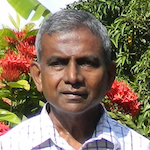Portents For Black July And After

By Rajan Hoole –October 29, 2016
Count Down To July 1983 – Part VII
We have confirmation from different sources that it was the UNP that was behind the campus violence. Thulsie Wickremasinghe, the main ringleader, has been identified as a UNP agent. He, it is said, was given good positions later by the Government. Qadri Ismail who was then a student at the University and was later in turn a journalist with the Island and Sunday Times, confirmed that the violence was a UNP affair. He also added, “Strangely enough, it was the JVP that worked hard to get the Tamil students back”. It also signifies a vacuum where the traditional opposition was ineffective. The UNP had created a situation where only the extreme-right or the extreme-left, which was not averse to the former’s methods, could thrive. In the South the vacuum was filled by the JVP from the violent Left. In the North- East it was to be the LTTE representing the extreme Tamil Right.
The ideas that surfaced at Peradeniya in May were those which emerged from the mouths of attackers at the end of July. Those who had destroyed Tamil houses down a road were heard saying, ‘We have cleansed this place!’ It suggests that at least by May 1983, an influential section of the UNP was planning for the big show while also laying down the line for those who still had some sanity left.
It is also worth noting that the attack on the Tamil students at Peradeniya marks a deliberate shift in political violence by the UNP. The document Communal Violence July 1983 put out by the Civil Rights Movement lists previous attacks on university students: – viz. Vidyalankara Campus (March 1978), Katubedda Campus (April 1978), Polgolla Campus (February 1979), Vidyodaya Campus (March 1979), Colombo Campus (March 1980), Kelaniya University (June 1980). (Note that subsequently all these campuses of the former single University of Ceylon, became independent universities; e.g. Vidyalankara Campus became part of Kelaniya University.)
These attacks were concentrated in the 27 months from March 1978 to June 1980. Parallel to this there were several UNP mob attacks against trade unions during this period, culminating in June 1980 when unions preparing for the general strike were attacked. Also in the same month there was a brutal attack on the teachers at Maharagama Training College. The CRM document says on the attacks on students, that thugs were brought from outside and the Police too participated in some of the attacks. Moreover, when the unions were attacked ‘no police protection was afforded to the pickets’.
The attacks here were not communal, and, had the clear purpose of breaking the opposition to the Government’s introduction of an open economy. There were no similar attacks on students for nearly 3 years after June 1980. We may therefore take it that the attack on Tamil students at Peradeniya flowed from a general decision about dealing with the Tamils taken at the highest levels of the UNP hierarchy.
In the next four chapters we will deal with these developments one by one. They are the developments in Trincomalee, the build up of opinion among the Sinhalese where sentiments were becoming violent resulting in the unbridgeable gap between the Sinhalese and Tamils, the assault on legality and a momentum, already observed, to resort to extra-judicial means in dealing with Tamil activists.
